Secrecy around gas export terminals leaves public in the dark on dangers
As liquefied natural gas terminals grow exponentially along the U.S. Gulf Coast, experts raise alarm on low-risk, high-consequence events
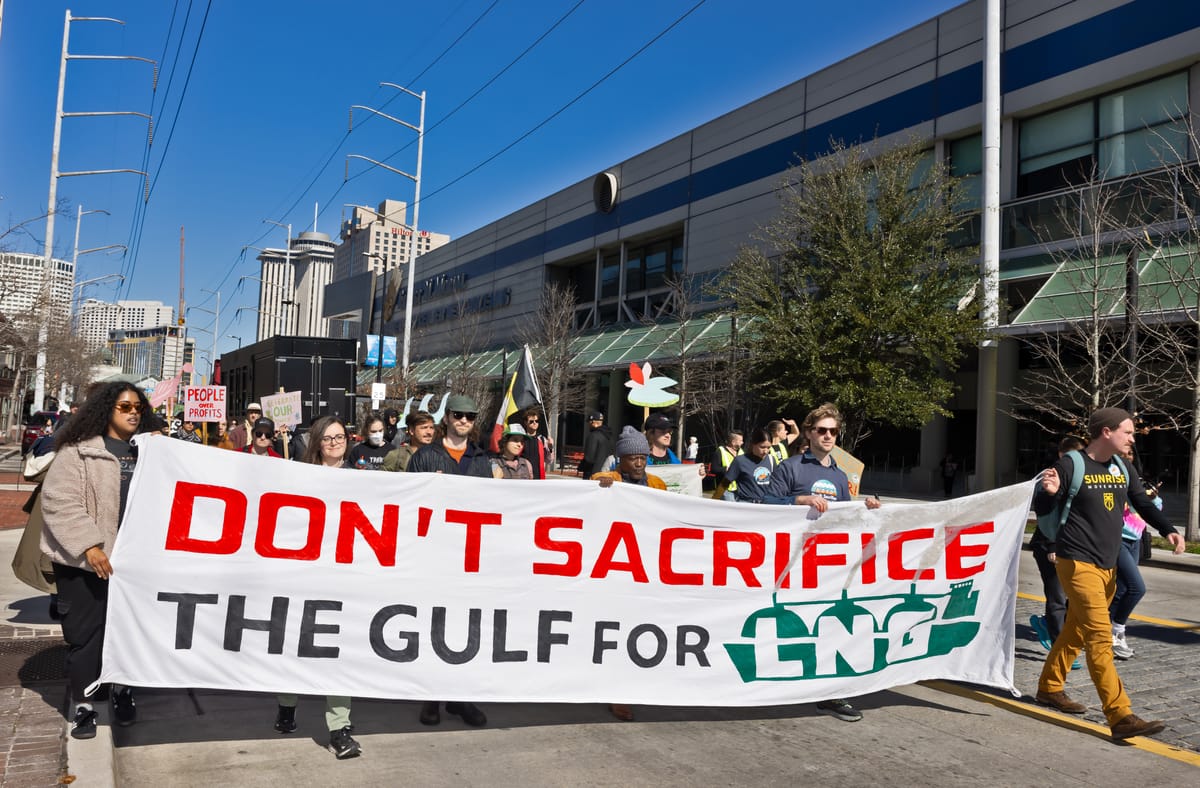
Published in Energy News Network, WWNO, Verite, Louisiana Illuminator and Canary Media
During a summer’s afternoon in 2022, a 450-foot fireball exploded at a liquefied natural gas terminal south of Houston, rocking sunbathers on Quintana Beach, adjacent to the Freeport LNG terminal, and rattling homes for miles around.
Eighteen months later, residents around the plant have yet to receive any information directly from Freeport LNG about what caused the explosion, or what to do if it were to happen again, said Melanie Oldham, one of the founders of Better Brazoria, an environmental and public health advocacy group who felt the blast in her living room, 3 miles from the terminal.
John Allaire frequently hears the internal alarms go off at Venture Global’s Calcasieu Pass LNG terminal, just a mile from his home on the Gulf Coast in southwest Louisiana, but he never knows what’s causing them. He said when he asked about the alarms, a Venture Global executive told Allaire to call 911 if he was concerned.
The Biden administration recently paused permitting for new LNG terminals to consider the macro implications such as climate change and national security of the U.S. becoming the world’s largest exporter of the super chilled, super condensed methane gas. But those living near the eight terminals already operating in the U.S. and the seven that are under construction have more immediate concerns — their safety.
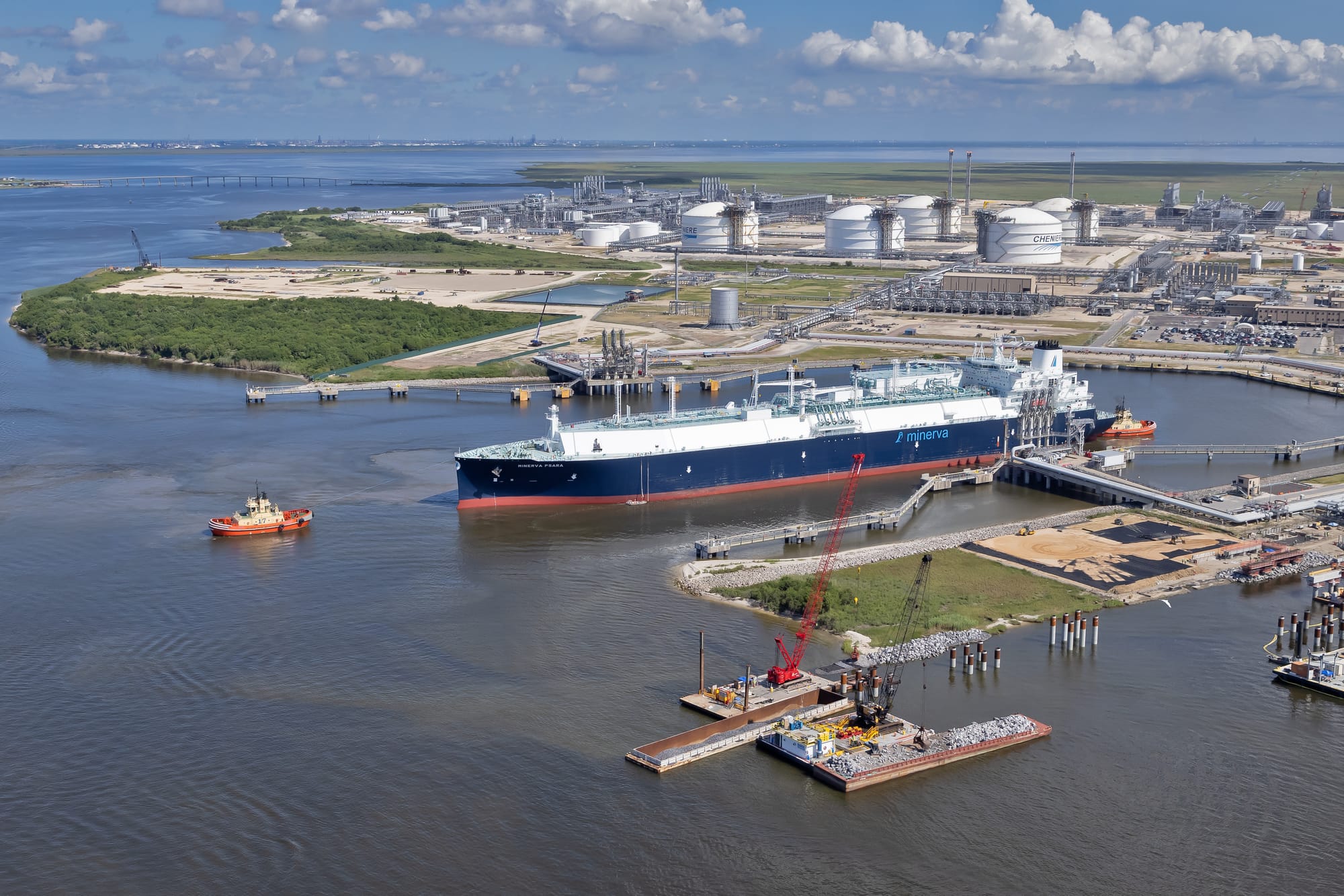
Unlike other industrial facilities, such as chemical plants and oil refineries, LNG operators don’t have to share with the general public information such as what chemicals are being used onsite and how an accident could impact the people who live around the facility.
“If people knew the risks around LNG, there would be so much public outcry that this buildout wouldn’t happen,” said Naomi Yoder, who researched the safety of LNG facilities as a staff scientist at the environmental watchdog Healthy Gulf.
The LNG industry says its operations are safe. On the website for the Center for LNG, a lobbying group, three paragraphs explain the safety of the emerging export industry. It points out that the U.S. Energy Department itself says “The physical and chemical properties of LNG render it safer than other commonly used hydrocarbons.” The Center for LNG did not respond to multiple requests for more information on LNG safety.
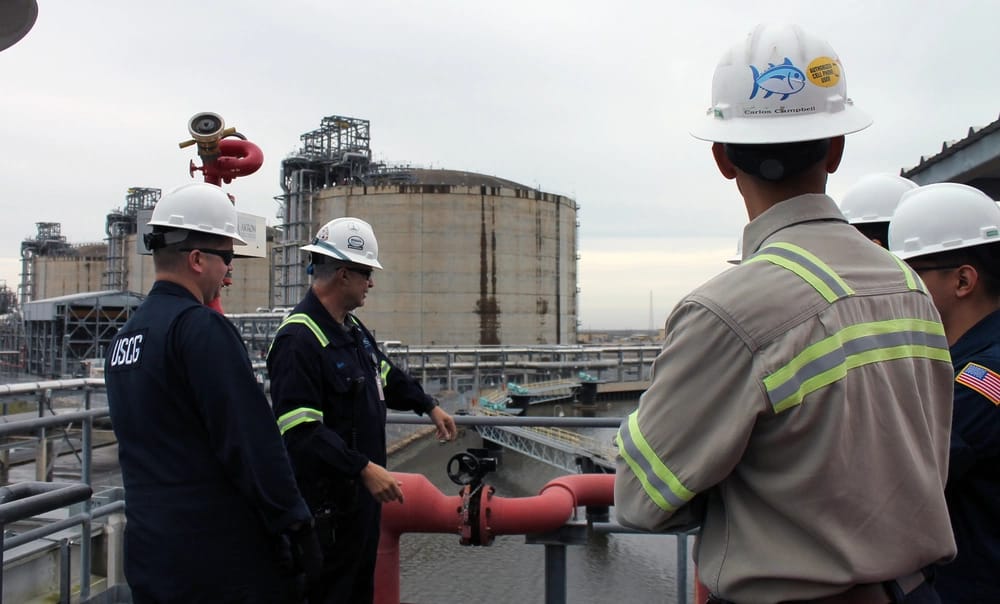
But the information needed for the public to verify that claim is often confidential because LNG terminals are considered critical infrastructure and could be terrorist targets. Companies also can shield information they consider to be trade secrets.
Even some of the computer models used to determine the risks of potential accidents at LNG terminals are proprietary. So scientists such as Jerry Havens — a professor emeritus of chemical engineering at the University of Arkansas who worked on the original safety standards for LNG import terminals — can’t verify their findings. And Havens is skeptical.
“What it means is that these places are being built shiny and new and approved with 1,100 and 1,200-page reports. But they are neglecting a major hazard. These calculations need to be checked.”
The risks around the terminals are made even more opaque by the fact the LNG industry is regulated by three federal agencies: the Pipeline and Hazardous Materials Safety Administration (PHMSA), Federal Energy Regulatory Commission (FERC) and the U.S. Coast Guard.
One of those agencies, PHMSA, is using regulations from the 1980s — before the United States started exporting LNG and when the fuel was mainly used as a backup for gas-fired power plants.
“There’s not sufficient information to know what the full risks are, and the repercussions of no one understanding are huge,” said Elizabeth Calderon, an attorney for Earthjustice, a nonprofit public interest environmental law organization.
Law allows plans to stay mostly secret
The secrecy around the safety information for LNG terminals is a contrast from refineries or petrochemical plants that are regulated under the federal Emergency Planning Community Right to Know Act. Under that law, facilities that handle chemicals are required to prepare risk management plans for the Environmental Protection Agency. Portions of those plans, including off-site scenarios, are made available for the public to view at federal courthouses.
But in 1998, the EPA exempted facilities “used to liquefy natural or synthetic gas or used to transfer, store, or vaporize LNG in conjunction with pipeline transportation” because the facilities are not considered “stationary.” PHMSA confirmed it does not enforce the Right to Know Act.
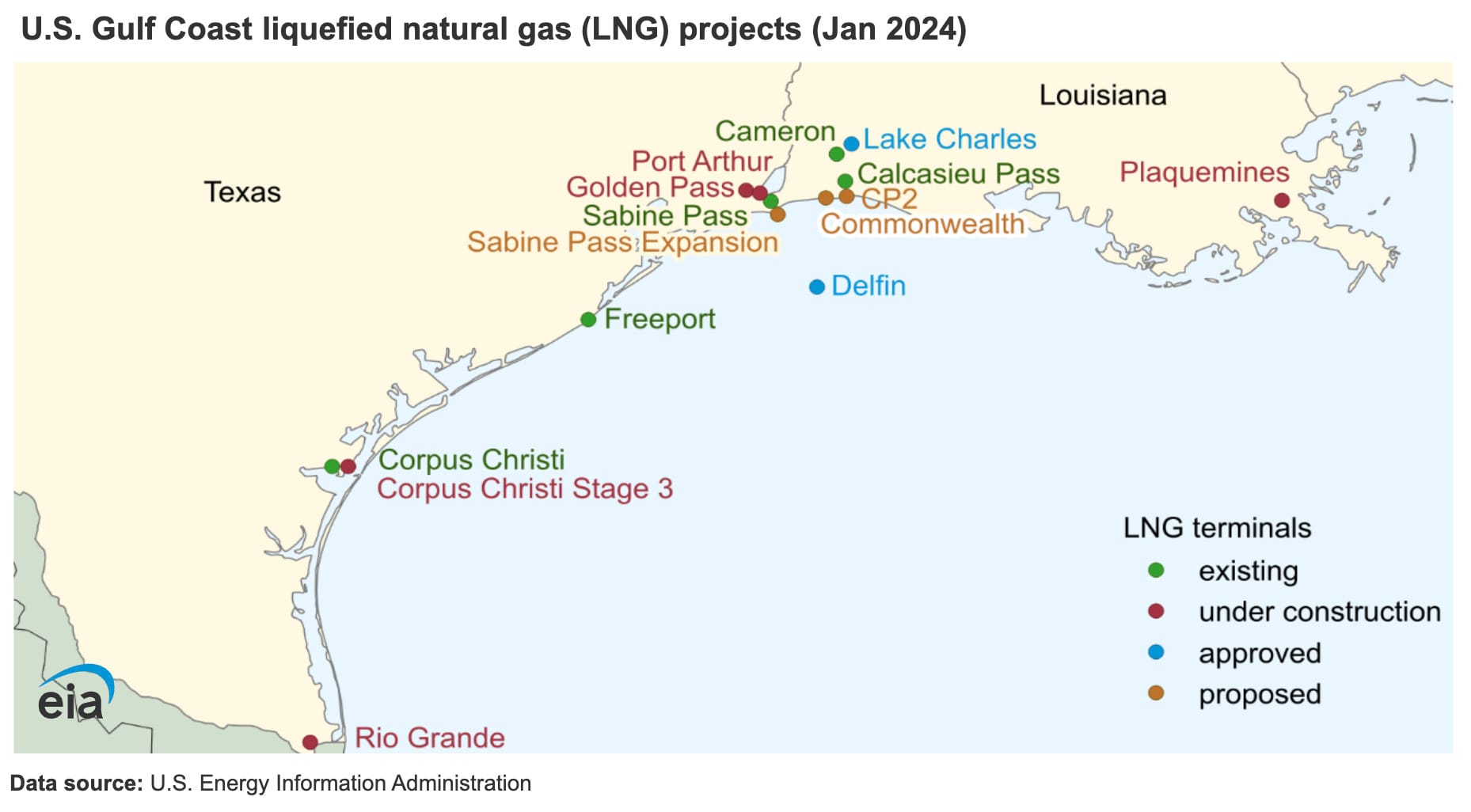
PHMSA and FERC do require developers and owners of LNG facilities to create and regularly update their emergency response plans, but the public availability of those plans on FERC’s website is uneven. Some, like for Freeport LNG, are available and updated regularly. But others, such as for the operating Corpus Christi LNG, could not be found by Floodlight.
And while 11 pages of its 170-page plan for under-construction Venture Global Plaquemines is publicly available, not even a redacted version could be found for Venture Global’s Calcasieu Pass terminal, which is already operating. The information that is available in those plans, and in material distributed by companies such as Freeport LNG emphasize the low risk of an accident.
Yoder said ideally, the plans would contain a "worst case scenario" for the LNG storage tanks and tankers that describes a potential blast radius and risks to people within each radius.
“All the important stuff is redacted,” said James Hiatt, a fisherman and environmental activist who lives in Calcasieu Parish, Louisiana. “They tell us that all of it is proprietary information and it’s national security. They won’t tell us what the risk is. People deserve to know if they are safe in their homes.”
As industry grows, so do accidents
Dick Gremillion, director of Homeland Security and Emergency Preparedness for Calcasieu Parish, says he isn’t overly concerned with the risks of LNG compared with the multiple other refineries and petrochemical facilities in the Lake Charles area. The region is home to several oil refineries, including one lightning struck in 2023, and chemical plants, where explosions are common.

Chuck Watson, founder of Enki, a company that models the risks of natural and manmade hazards, agrees the likelihood of an LNG accident is quite low. But, he added, “The problem is if you have an accident, the consequences are quite high.”
A 2009 report from the Congressional Research Service suggests the safety record of the industry is mixed. It cites 13 serious accidents in the world involving LNG, including a 2004 fire at a terminal in Algeria that killed 27 workers. The report concludes that import terminals pose safety challenges because “LNG is inherently hazardous and its infrastructure is potentially attractive to terrorists.”
Regional concerns about LNG have been heightened by a string of incidents at facilities since the U.S. began exporting the fuel in 2016. The 2022 accident south of Houston, in which a segment of pipe exploded, occurred because Freeport failed to identify hazards or to implement changes from a 2021 hazard analysis. Worker fatigue from overtime was listed as a contributing cause.
In 2018, PHMSA ordered Cheniere Energy to shut down two LNG tanks at its Sabine Pass, Texas, plant and fined it for failing to deal with known leaks in its double-hulled tanks. And in 2022, Calcasieu Pass was cited by the Louisiana Department of Environmental Quality for exceeding permitted release levels 139 times.
“Operational problems, procedures, lack of controls, proper controls, lack of adequate training. These types of things keep happening at LNG facilities,” Allaire said. “The potential is there. There is human error and these kinds of things keep happening. Something is going to happen here in the U.S.”
Potentially deadly problems
Havens, the retired chemical engineering professor, has been sounding the alarm for years on one specific accident that could happen at a liquified natural gas LNG terminal — a vapor cloud explosion in zero wind conditions. These can occur when a large amount of flammable refrigerants, which are used to superchill the gas, leak and create a cloud of vapor.
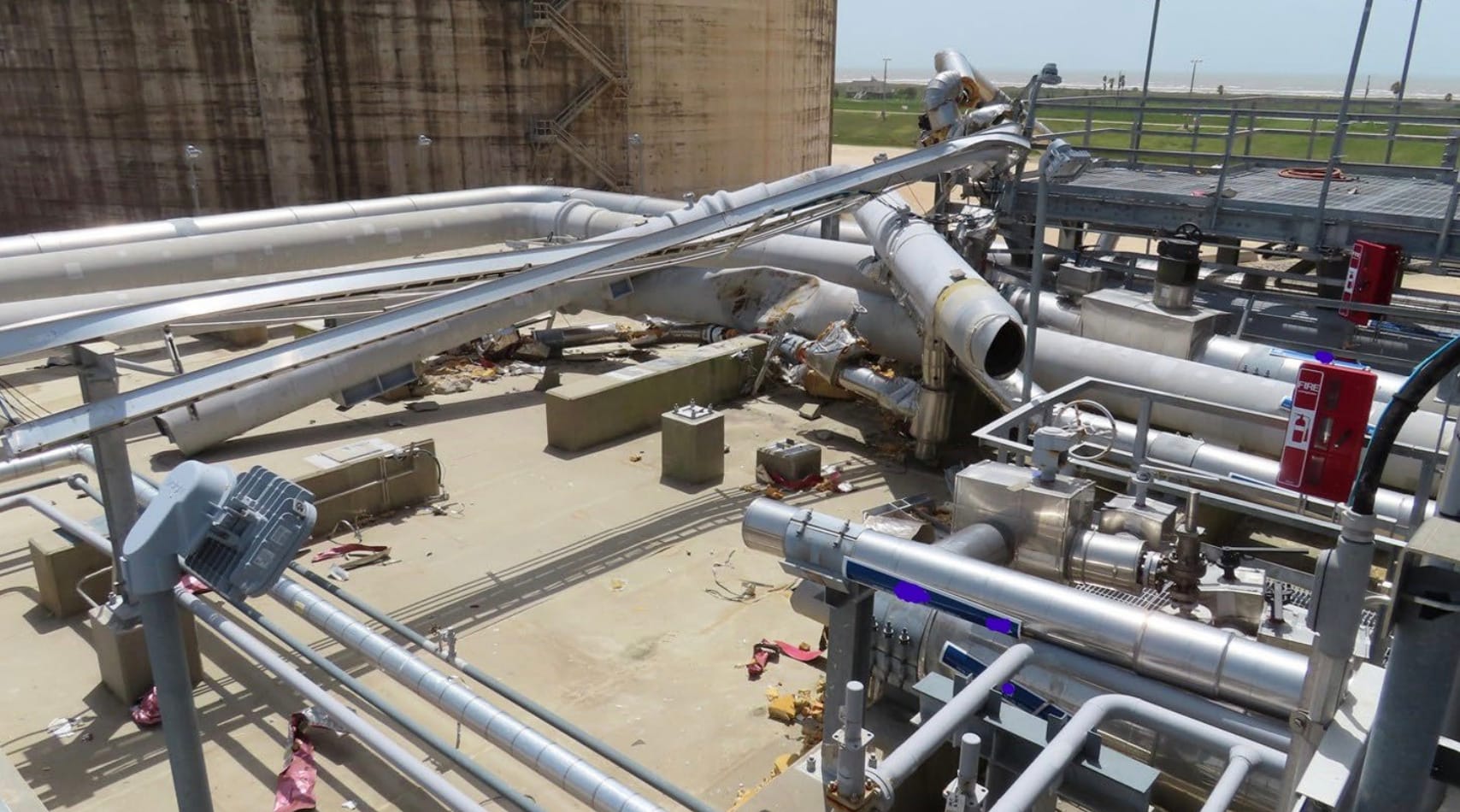
Without wind to disperse the gas, the clouds can become larger and more dangerous. If ignited, these vapor clouds can explode at a much higher pressure than a typical chemical explosion.
The industry acknowledges the potential for vapor cloud explosions in permit applications and environmental impact statements. In almost every case, the risk of vapor cloud explosions is limited, according to those analyses, because it would stay within the perimeter of the terminals.
But Havens argues those calculations don’t, among other things, account for zero or low wind conditions.
“The risk has been calculated away,” Havens said. “They are actually ignoring a catastrophic risk.”
A British industrial safety agency says the risks of such explosions can be reduced by installing a small number of sensors.
PHMSA has commissioned research into the issue and says the concerns about vapor cloud explosions in zero-wind conditions might be addressed as part of its long-promised update to LNG safety regulations. The agency says its notice of proposed rulemaking for those updates will be issued in May, but it has promised the updated rules for at least two years.
Tankers carry risks
When LNG import facilities were being proposed in the early 2000s, there was a public outcry over the potential that terrorists could target the ships as they traveled through populated areas. The Coast Guard and state and local police responded by escorting the tankers in and out of Boston Harbor with machine guns.
Along the Gulf Coast, however, the presence of Coast Guard escorts is not evident, said Allaire, who can watch the tankers pass by his property two or three times a week.
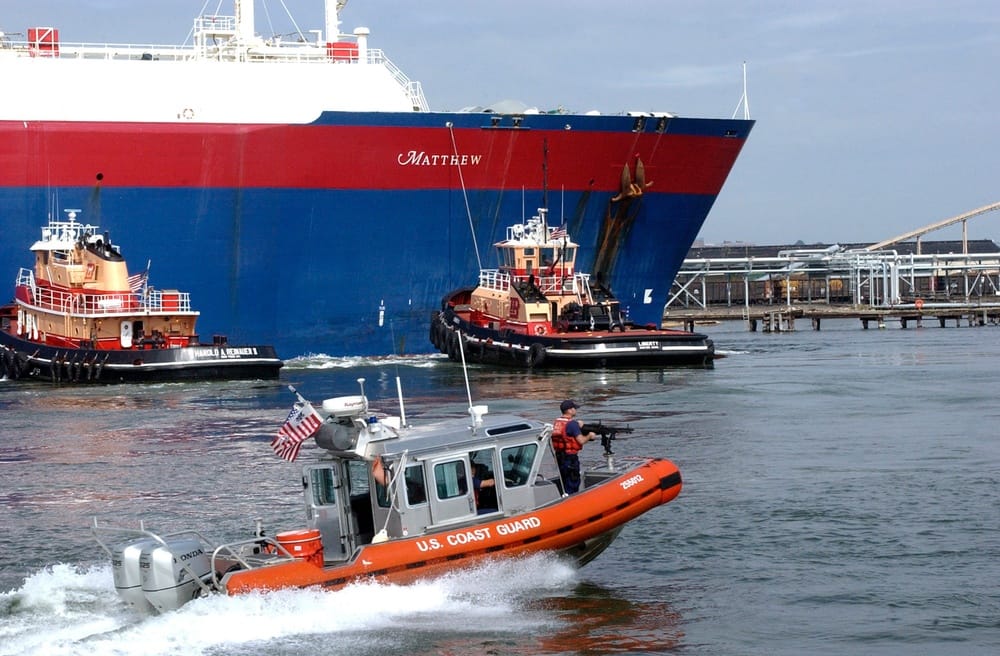
The Coast Guard requires each LNG owner to develop safety plans, including having an incident commander aboard each vessel in the event of an accident. The agency, however, did not directly answer whether it still escorts LNG tankers, saying it screens every vessel for safety or security risk and conducts operations to address identified risks.
Watson, the risk modeler, is concerned about yet another danger: leaking LNG onto the water. When the gas, which is supercooled to -260 F, hits the warm water, the gas could warm and rapidly expand, creating a shock wave that could travel miles. If that gas ignited, it would cause vast destruction, Watson warns.
Watson conducted risk modeling for the Elba LNG terminal downriver from Savannah, Georgia. He found if there were a major rupture of a tanker ship or storage tank, heat from the resulting rapid phase transition could cause second degree burns up to 1.5 miles away. An explosion of the gas could affect those 5 miles away.
Who’s in charge?
Confusion around which federal agency regulates which aspect of the LNG industry makes it hard for the public to get information, said Yoder, who is now GIS data manager at the Bullard Center for Environmental and Climate Justice at Texas Southern University.
“Honestly, when we asked PHMSA about the emergency response plans and about the risk assessments, they’re like, ‘OK, talk to FERC,’ ” Yoder said. “And then when we asked FERC, they say ‘You need to talk to PHMSA,’ and then we go back to PHMSA. They say, ‘Oh, well actually you should talk to OSHA.’ I mean it’s just absurd.”
Although “the law is not very clear on who has what authorities,” former FERC chair Richard Glick insists the overlap does not create blindspots in regulation.
But Glick said he wasn’t aware until shortly before he left FERC in 2022 how little residents around the terminals know about emergency planning.
“The developer and the government are naturally concerned about making sure that certain information is unavailable to terrorists,” he said.
“On the other hand, people who live in these communities have very legitimate reasons to be concerned about these facilities — whether it be evacuation plans, whether it be just plans about what’s going to be put in there, what the dangers of explosions, and all sorts of other potential issues are,” Glick added. “In my opinion, they weren’t necessarily receiving the information they should receive.”
Floodlight depends on a community of readers like you who are committed to supporting nonprofit investigative journalism. Donate to see more stories like this one.


